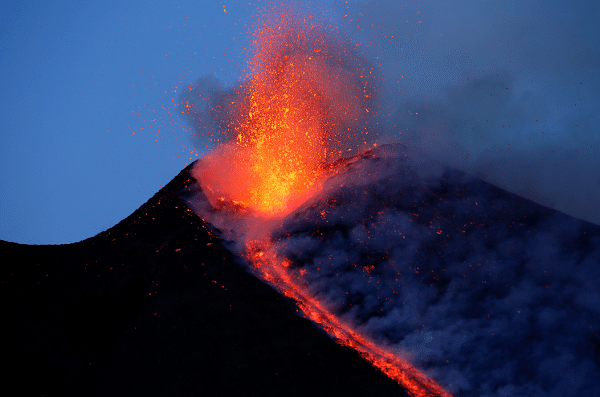Volcanic ‘Super-Eruptions’ Need Deep Magma Reservoirs
Volcanic super-eruptions, or supervolcano eruptions, are rare events, which is a good thing for life on Earth because of the sheer destructive power each of those eruptions unleashes. And they are even more mysterious than normal volcanoes, with scientists not knowing much about how they form or erupt.
A study published this week in the journal Nature Geoscience tries to unravel some of that mystery, and suggesting how supervolcanoes form and why they erupt so rarely. In a paper titled “Lifetime and size of shallow magma bodies controlled by crustal-scale magmatism,” an international team of researchers said volcanic super-eruptions need large magma reservoirs deep inside Earth to accumulate enough magma of their own before they spew lava, ash and dust in a cataclysmic event.
Read: Italian Supervolcano Campi Flegrei Could Erupt Sooner Than Previously Thought
Researchers from ETH Zurich in Switzerland led the study, and were aided by colleague from Cardiff University in the United Kingdom and the Georgia Institute of Technology. They said in the paper that magma from large reservoirs deep within Earth’s crust drips slowly but steadily to feed smaller reservoirs closer to the surface. The deep large reservoirs themselves draw magma from the mantle, and behave like partially molten rock sponges that can store large amounts of magma.
Using a numerical model to simulate the process, the researchers showed in the study that these reservoirs — key to volcanic super-eruptions — can take millions of years to form, which is why those eruptions are so rare.

Italy's Mount Etna, Europe's tallest and most active volcano, spews lava as it erupts on the southern island of Sicily, Italy on Feb. 28, 2017. Photo: REUTERS/
Wim Degruyter, from Cardiff University’s School of Earth and Ocean Sciences, who co-authored the study, said in a statement Friday that current theories don’t explain how hot magma near the much cooler surface of Earth can maintain its heat and accumulate in volumes large enough to be called a super-eruption, instead of cooling down or erupting as a regular volcano.
“Our study has shown that the key to this is much larger reservoirs deeper below the surface that are able to slowly increase the temperature in the upper part of the crust such that it becomes more amenable to the storage of magma. When the crust has become fully mature, giant reservoirs are able to form in the upper crust and thus we see extremely powerful eruptions,” he said in the statement.
Read: Volcano Eruption May Have Caused First Mass Extinction 450 Million Years Ago
One of the world’s largest supervolcanoes is at Yellowstone in Wyoming, and previous studies have shown that its magma reservoir is connected to a deeper body of magma that is 12 to 28 miles below the surface. It is estimated that the amount of hot molten rock in that body is enough to fill up the entire 1,000-cubic-mile Grand Canyon 11 times over, and still have some left.
“Our calculations appear to agree with the observations that have been made at Yellowstone,” Degruyter said.
Yellowstone has erupted three times in the last two million years, the last of those eruptions occurring 640,000 years ago. The largest supervolcano caldera in the world is also in the United States — La Garita in Colorado that erupted about 28 million years ago. At that time, it spewed out an estimated 1,200 cubic miles of material. These eruptions can affect the atmosphere drastically, cooling temperatures by as much as 10 degrees Celsius (18 degrees Fahrenheit) for as long as a decade.
Related Articles

